
Gallery b2_ is pleased to present the exhibition »Meyer Hilgenfeld Tarr«. Three artists, Inken Hilgenfeld (Berlin/Regensburg), Bea Meyer (Leipzig), and Hajnalka Tarr (Budapest), will show a selection of pictures and objects. The artists’ interests unite in the seemingly banal, and in the relationship of the formal realisation of their work. Inken Hilgenfeld investigates optical illusions. She brings together abstract, geometric mirror works with a series of delicate wall objects made of wooden strips. Hajnalka Tarr and Bea Meyer share a predilection for repetitive processes of production. In her work “attachments”, Tarr binds paper clips together to make a wall: metallic, transparent and moveable at the same time. In her pictures she rearranges the pieces from the puzzles of old masters into new abstract structures. Bea Meyer’s new series of work shows scattered lineaments, hatched surfaces on generous white ground in almost zen-like introspection. Meyer transforms large format paper surfaces into substrate material, bringing the underlying structure into play. The artists, whose names represent the exhibition, are puritans. Distanced from effect, they tell us complexly about the subtle meaning of things, their context and our perception.
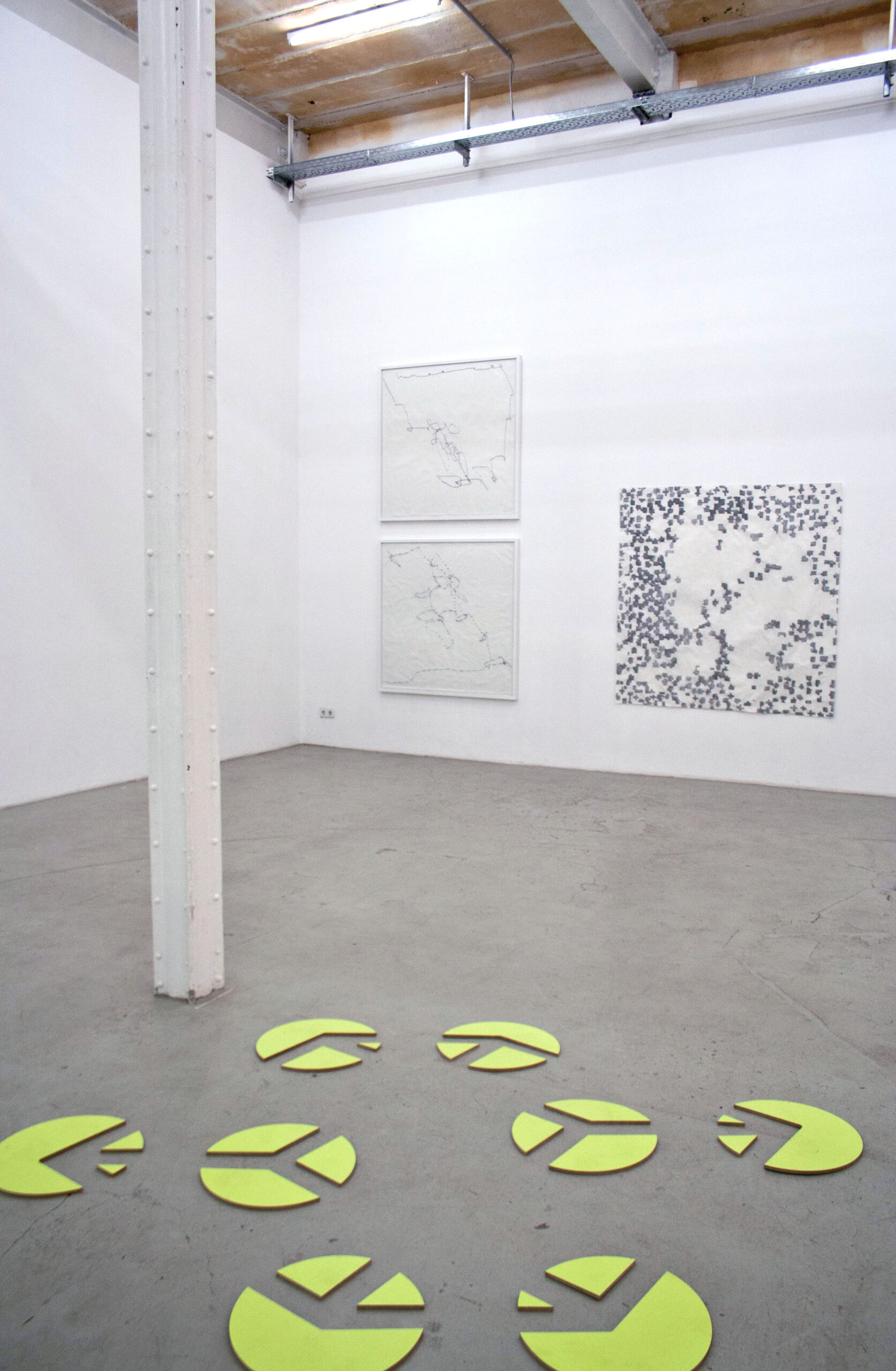
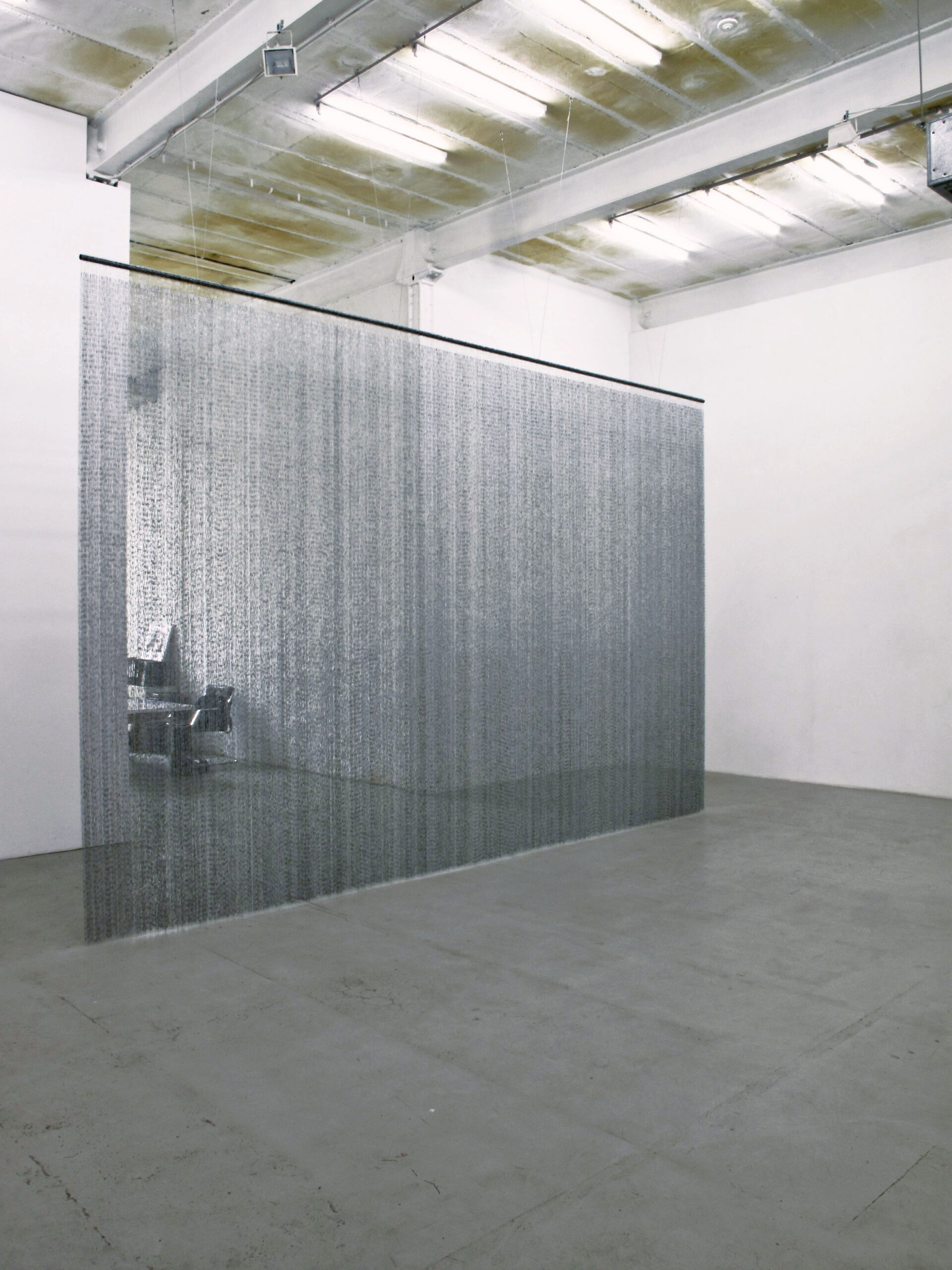
Attachement, 2008
installation, paper clips, steel pipe
3,5 x 5,5m

Attachment, 2008 (detail)
Installation, Büroklammern, Stahlrohr
3,5 x 5,5m

Caravaggio Bacco, from the series «according to taste», 2011
chipboard, puzzle
95 x 82 cm
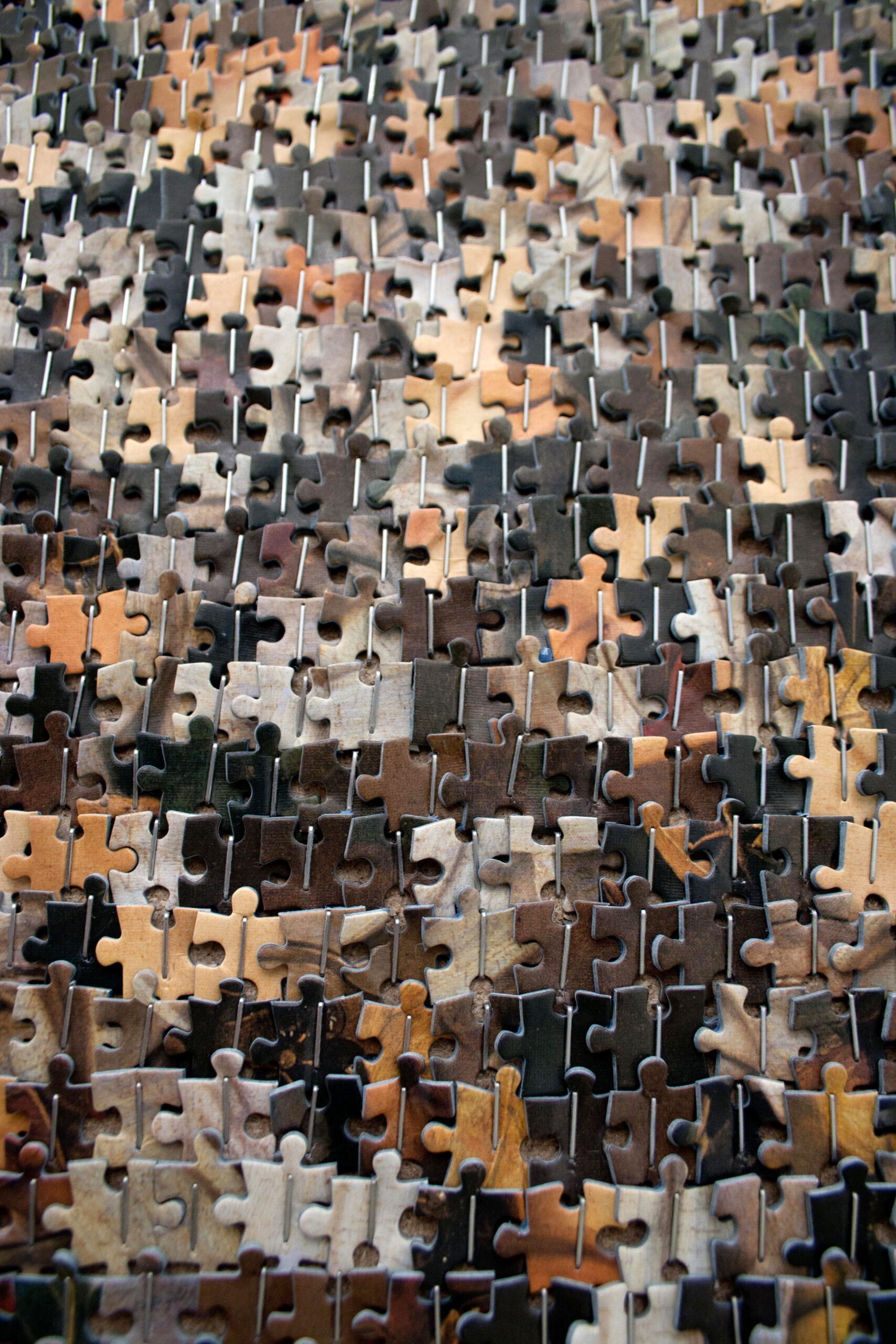
Caravaggio Bacco, from the series «according to taste», 2011
chipboard, puzzle
95 x 82 cm
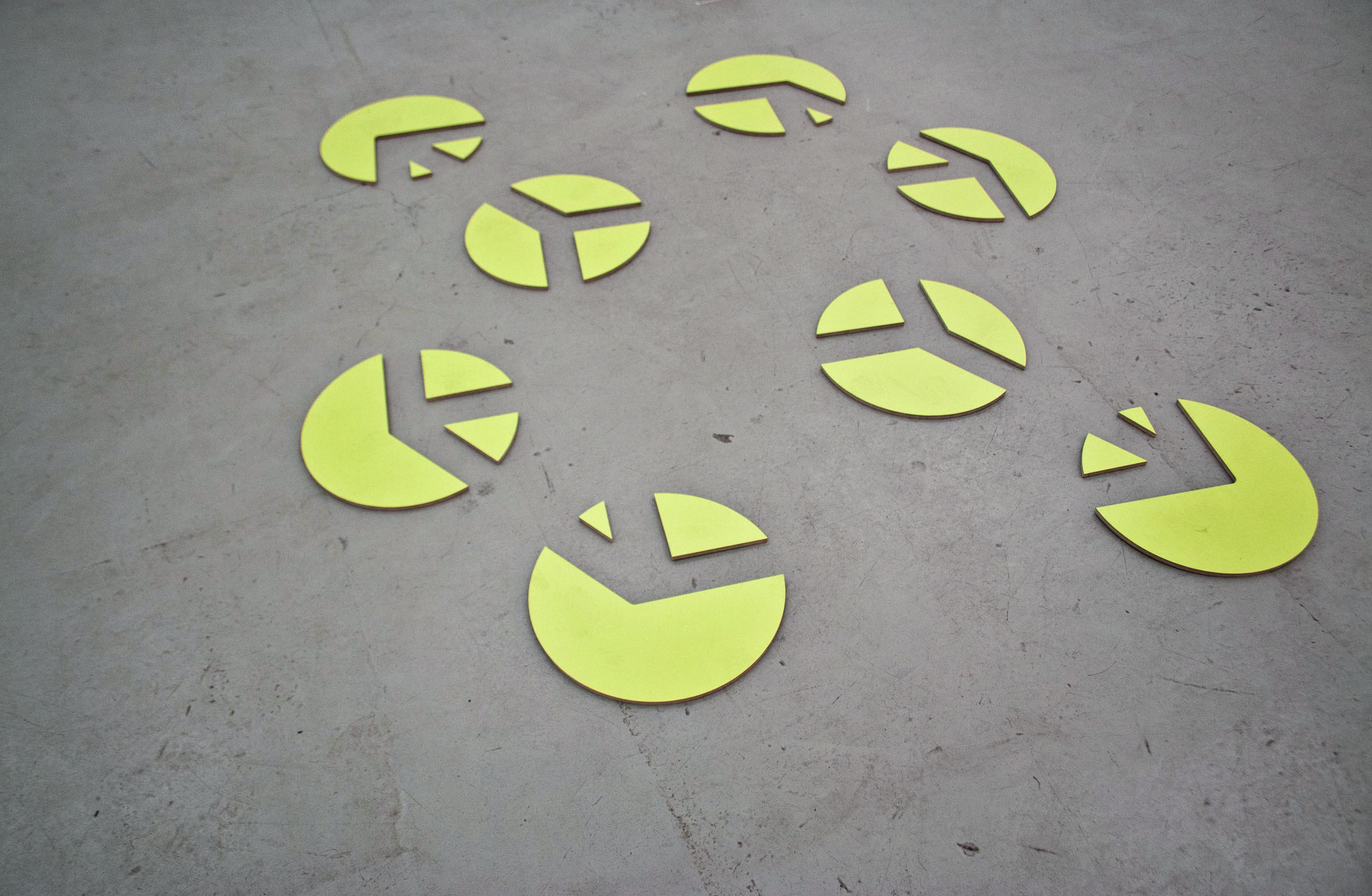
SUBJEKTIVER WÜRFEL, 2011
coated MDF
180 x 180 cm

o.T., 2011
collage, paper, spray paint, glass, ink
52,5 x 42,5 cm
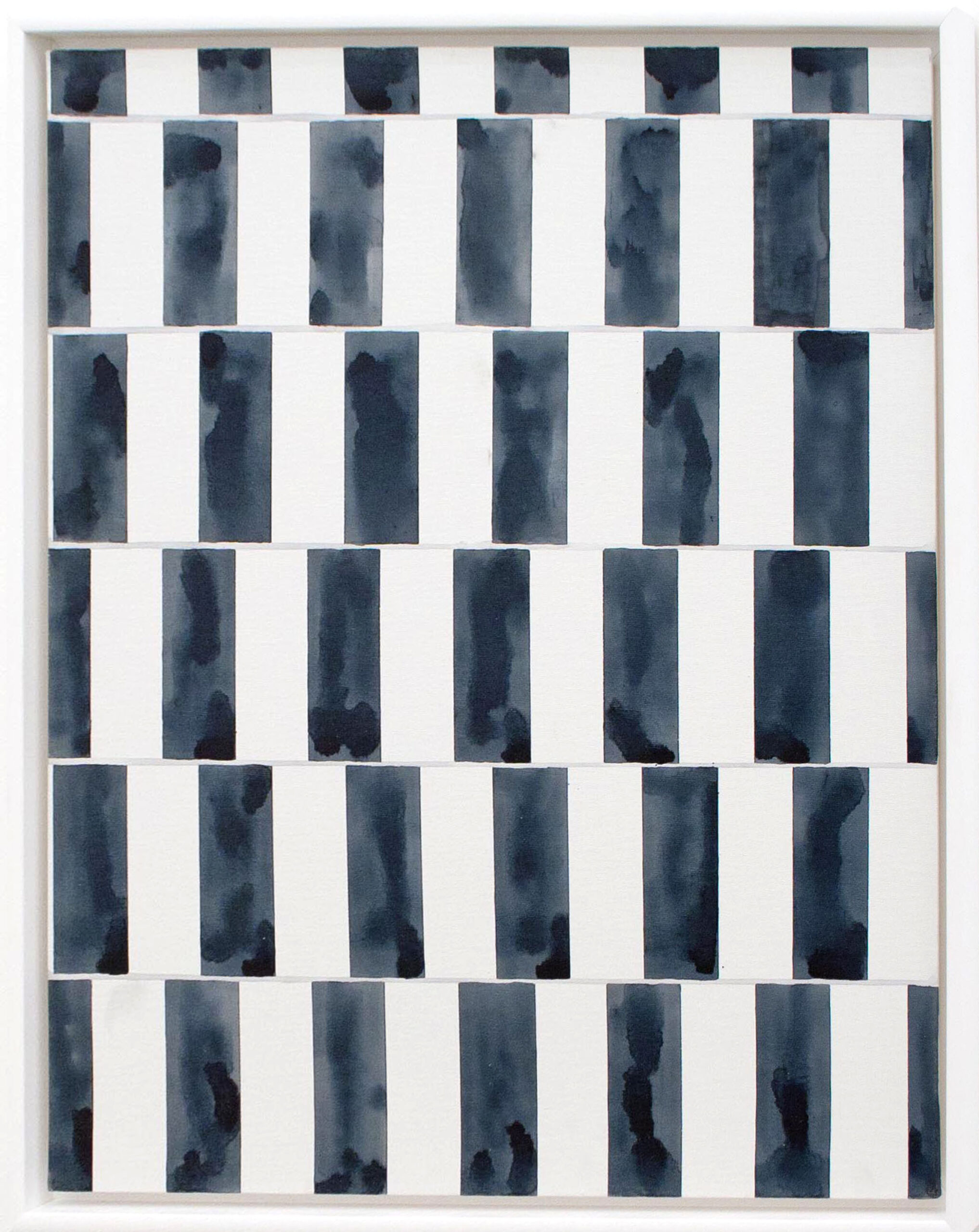
o.T., 2012
ink on painting box
64 x 64 cm
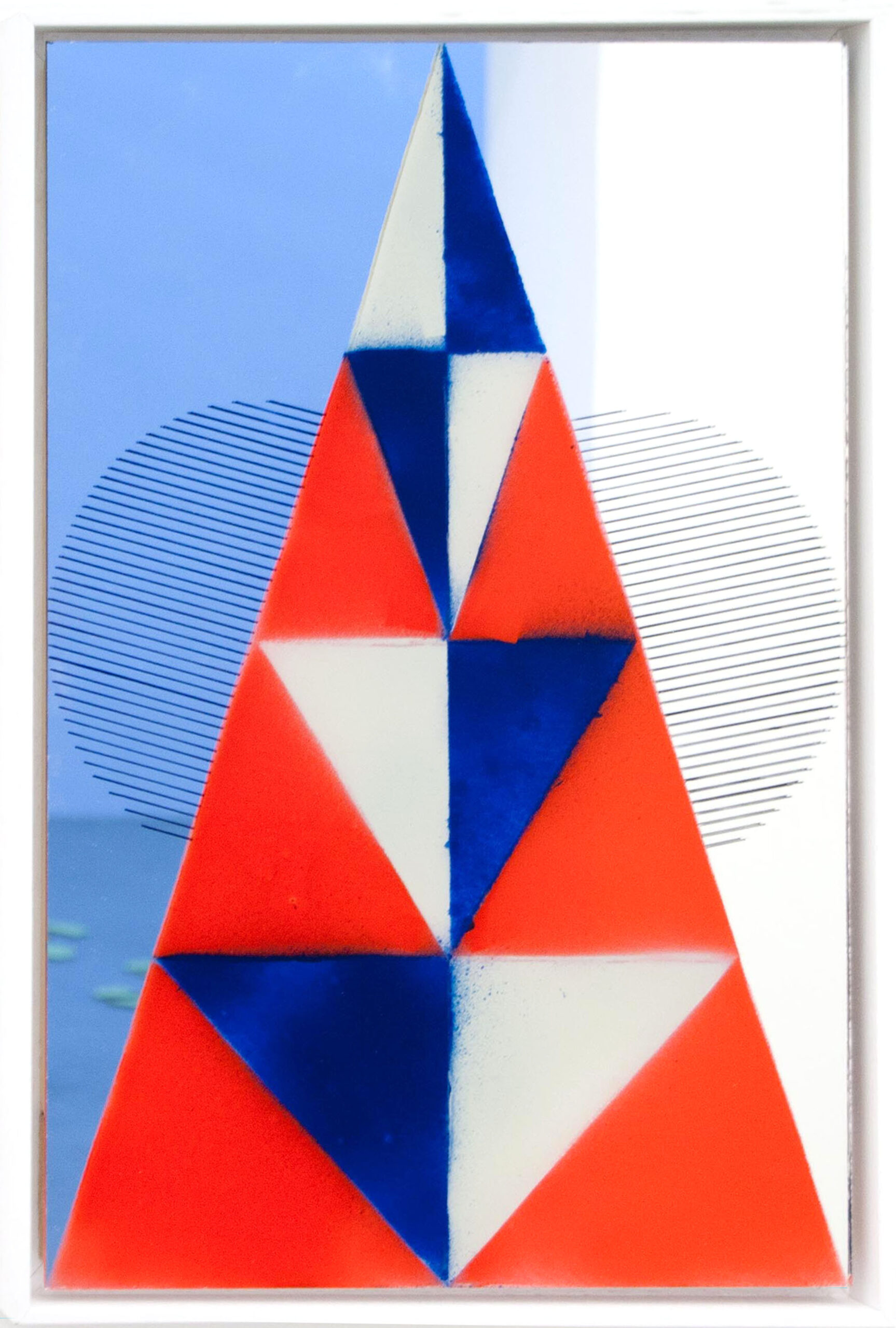
o.T., 2012
spray paint and marker on mirror glass
44,5 x 33 cm
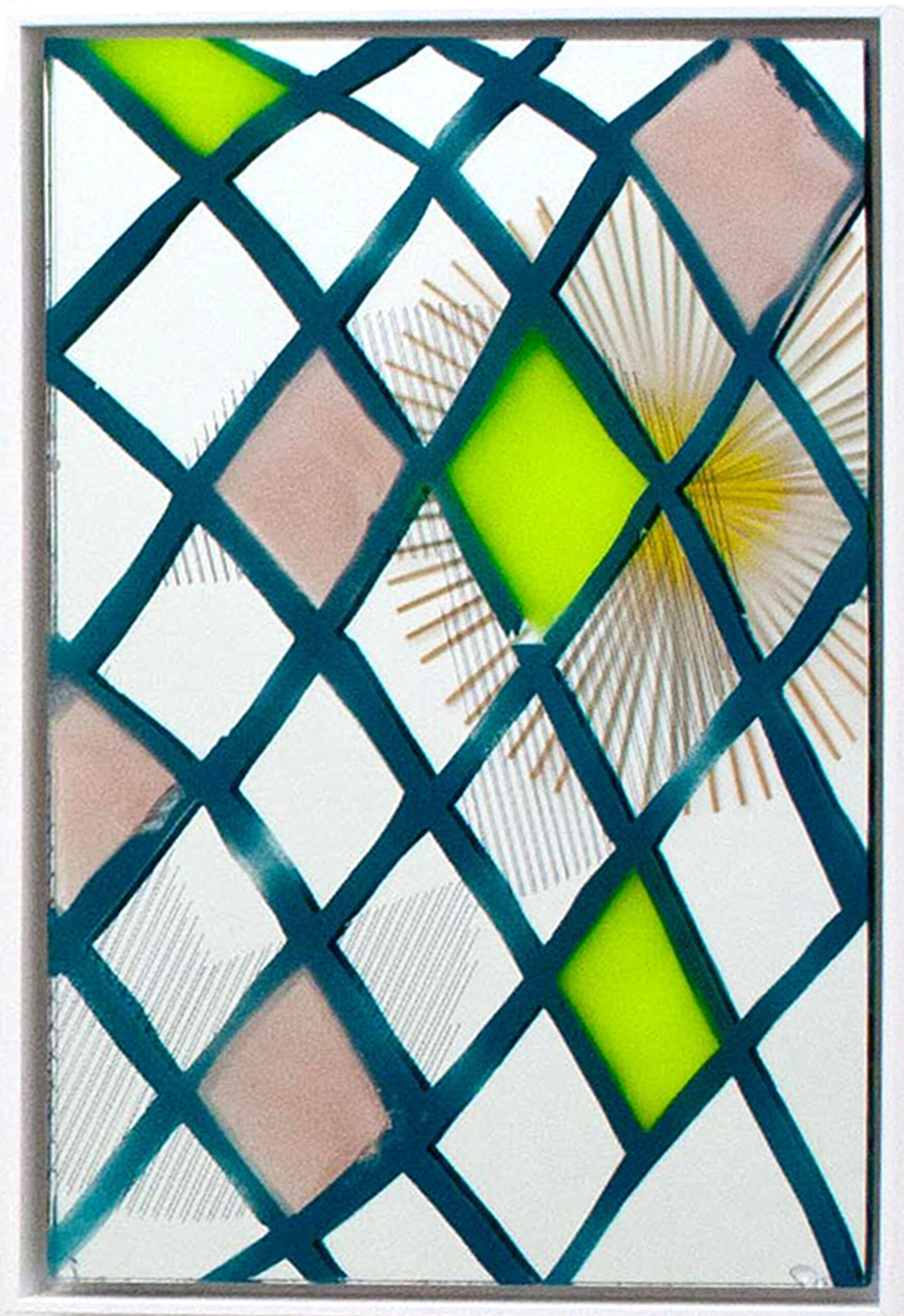
o.T., 2012
spray paint an marker on mirror glass
51 x 37 cm
About double images 1, 2, 3
Softly shaded surfaces and scattered lineature on an expansive white background: the first impression of Bea Meyer’s new series is of the ephemeral, a Zen like subduedness. The bundles of black marks are reminiscent of bird footprints in snow, alternately crowding together and then spreading out to form an undecipherable figure. Despite the drawing gesture that has been absorbed by the picture and the surface finish of the shading that cites computer generated images, the material and the operations transform both gesture and optics fundamentally. As in her other series, Meyer works here with needle and thread.
Instead of generating marks on a surface, the surface is perforated, the support itself is altered and its depth structure brought to the fore. The paper support is made of Manila hemp, which is especially resistant to tearing, counteracting potential damage through unintended use. A basic cultural technology, sewing entails the creation of durable connections, the putting together of individual parts to make a stable and yet flexible whole. Although the associated form of embroidery serves mainly decorative embellishment it shares with sewing the status of handwork rather than creative work. The practice involves a good deal of repetition and demands high levels of concentration, precision and stamina. Meyer deploys both techniques somewhat against the grain, applying them to the casualness and spontaneity of scribblings, to which she imparts a solidity that reverses the initial impression. At the same time, she “reveals” the sewing equipment, raising it from its “readiness-to-hand”, as Heidegger might say. In other words, she frees it from its serviceability, opening to sight its autonomous aesthetic dimension: the coarse texture of the tow, the smoothness and shininess of the fine garn, the bodyness of seams and stitches, the stringy fibre of the paper. When technique and effect are regarded together, the works in the series acquire the character of double images, not alternating between figure and field but rather between drawing and textile sculpture. Depending on the changes in viewing distance, in standpoint, one of the two levels advances into view. The challenge to the observer is to see both levels at once and hold them suspended as a unity, like two interconnected red rings that appear to dance out of the series, while at the same time holding everything together and anchoring it.
Susanne Holschbach
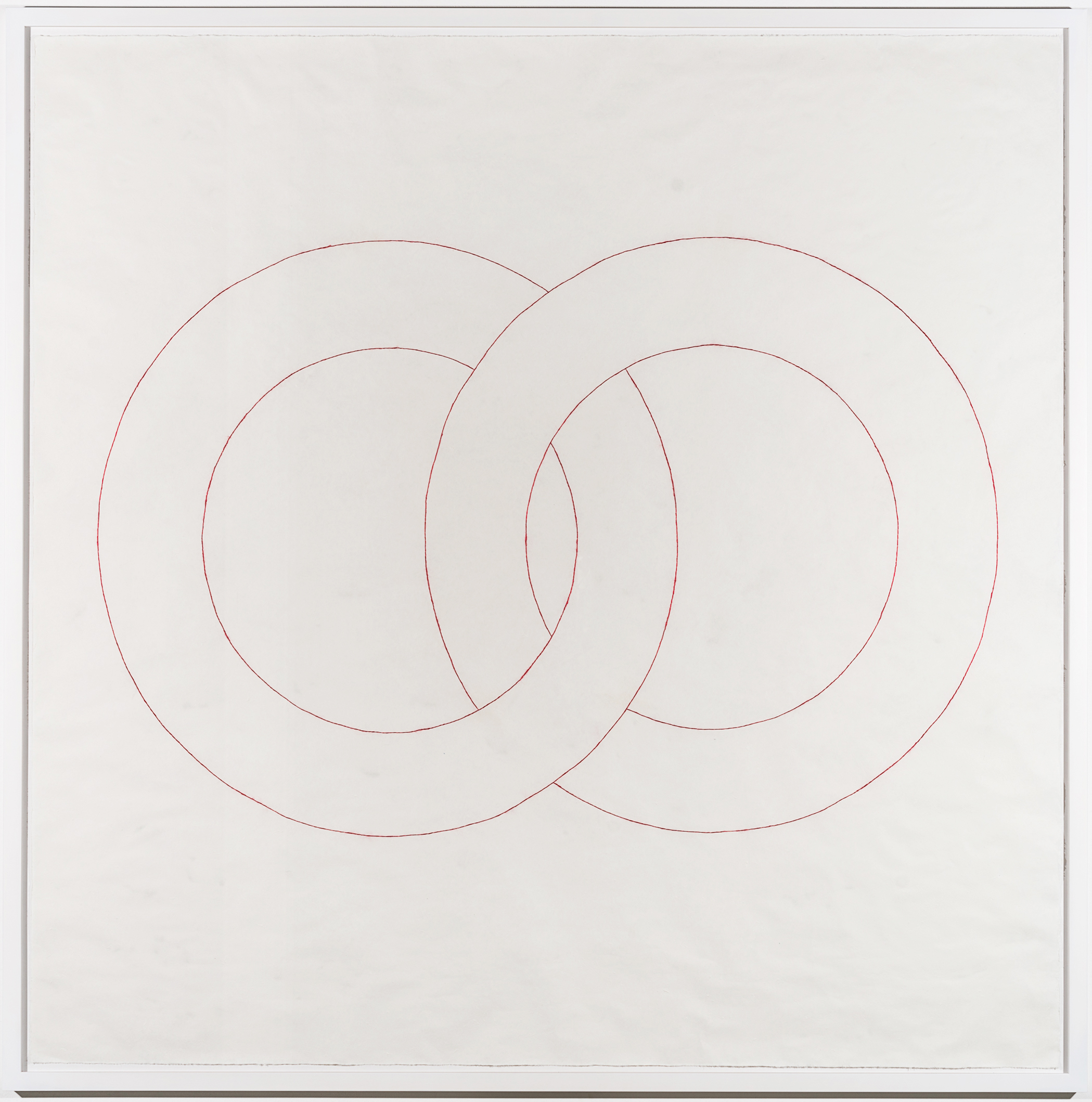
»1«, 2012
aceta yarn sewn on paper
165 x 165 cm
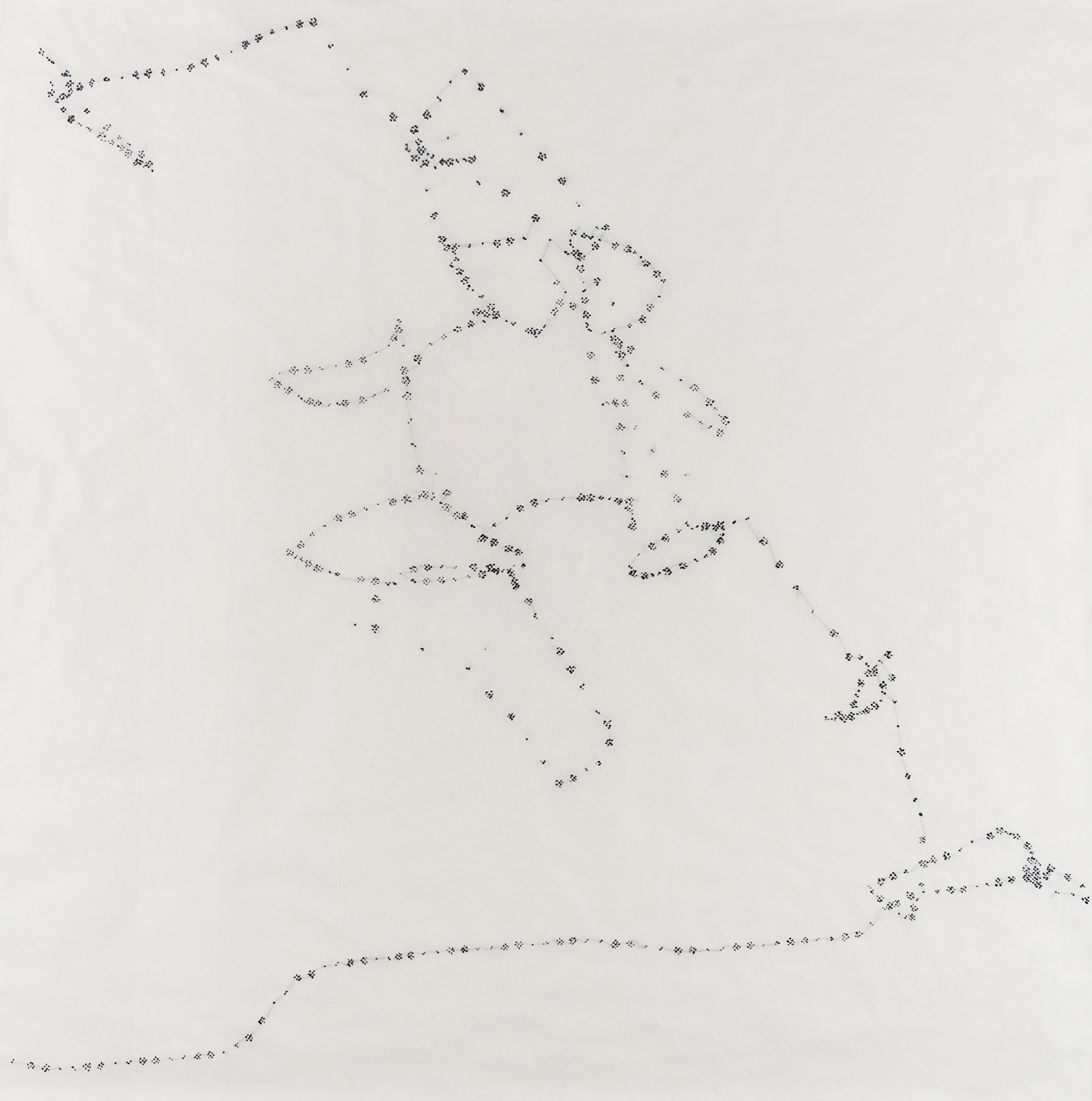
»2a«, 2012
cotton yarn sewn on paper
120 x 120 cm
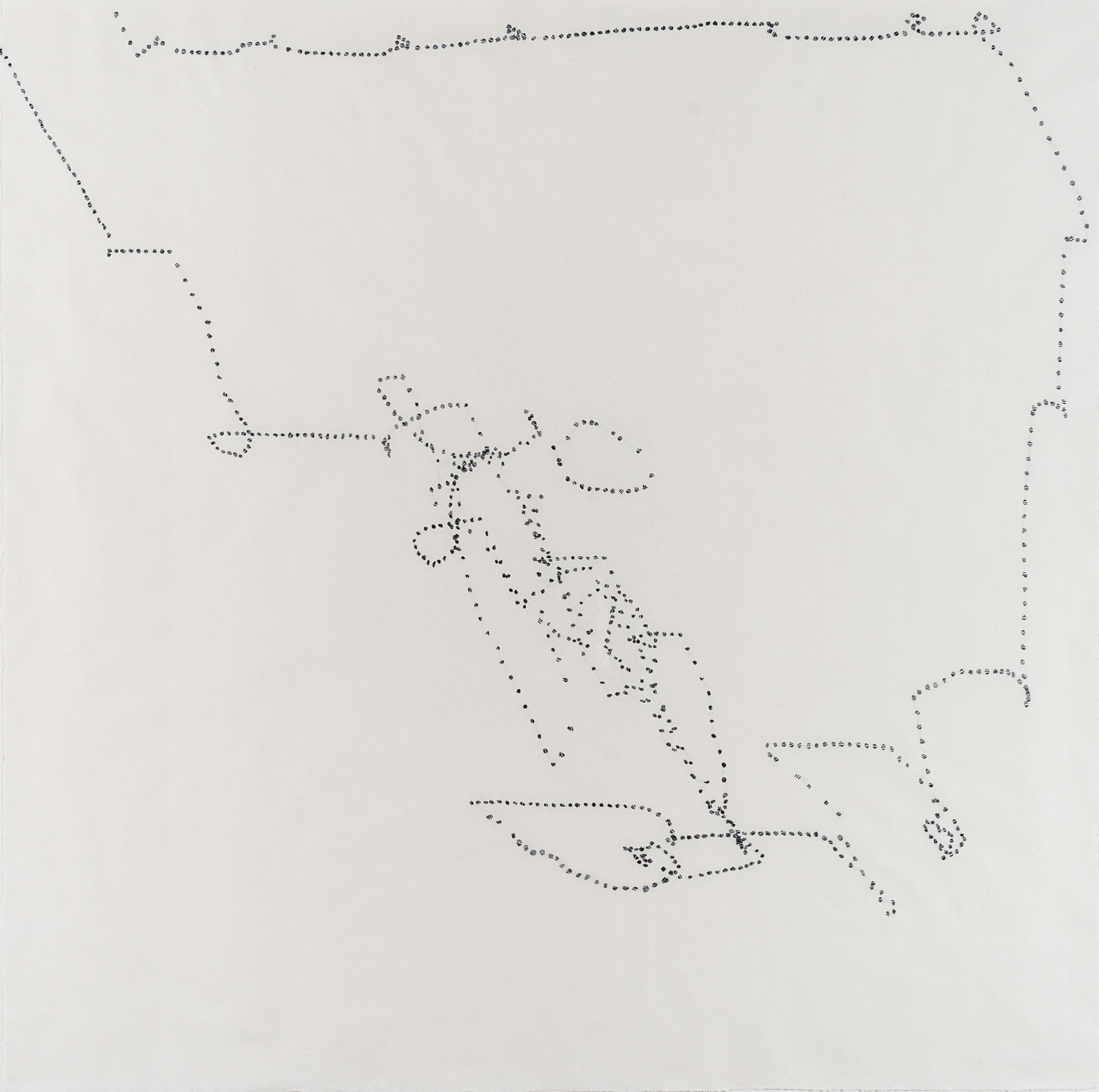
»2b«, 2012
cotton yarn sewn on paper
120 x 120 cm
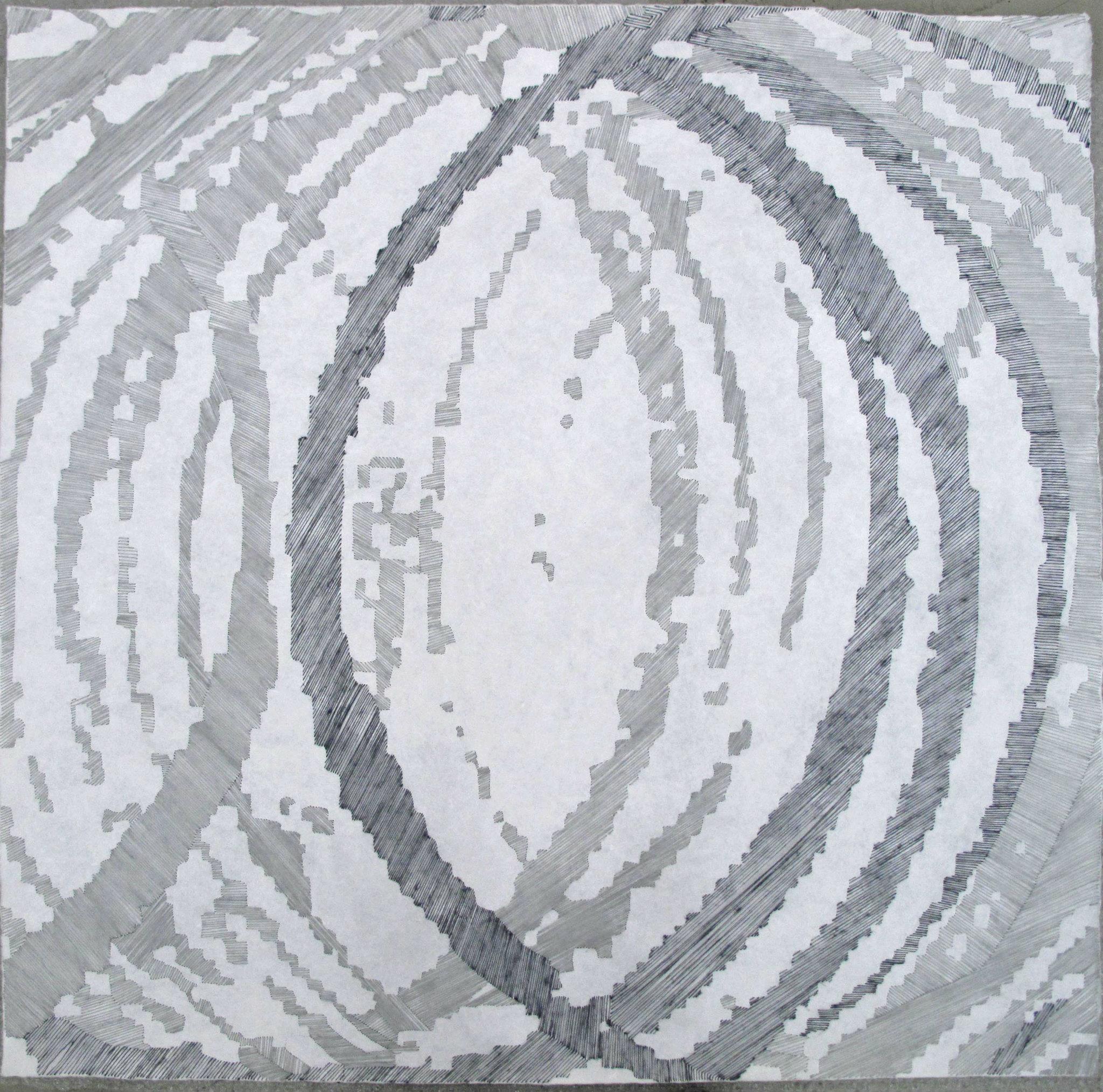
»3a«, 2012
hemp tow sewn on paper
120 x 120 cm
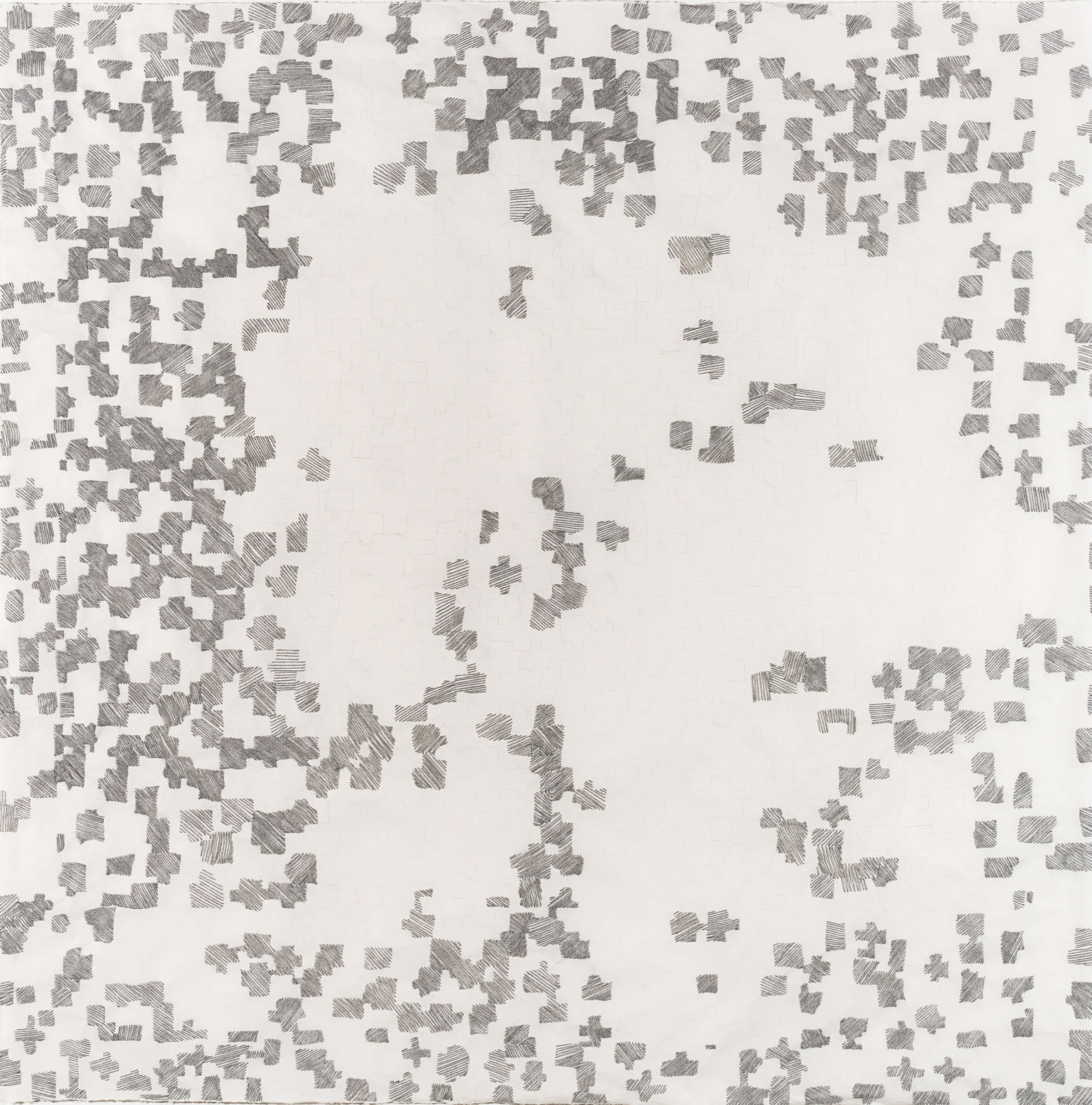
»3a«, 2012
linen yarn sewn on paper
165 x 165 cm